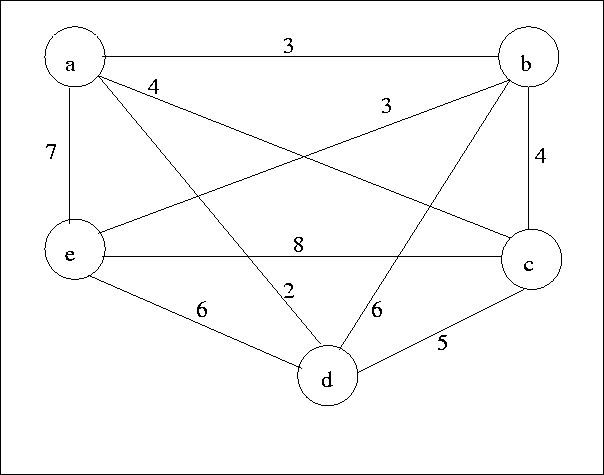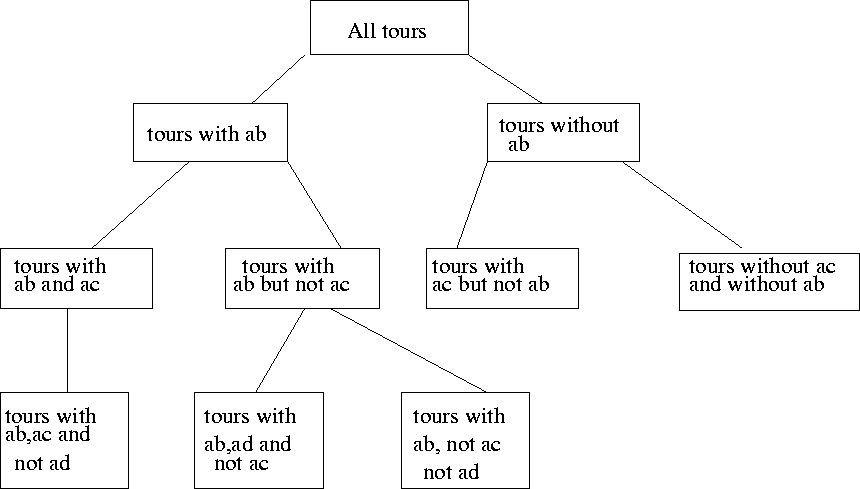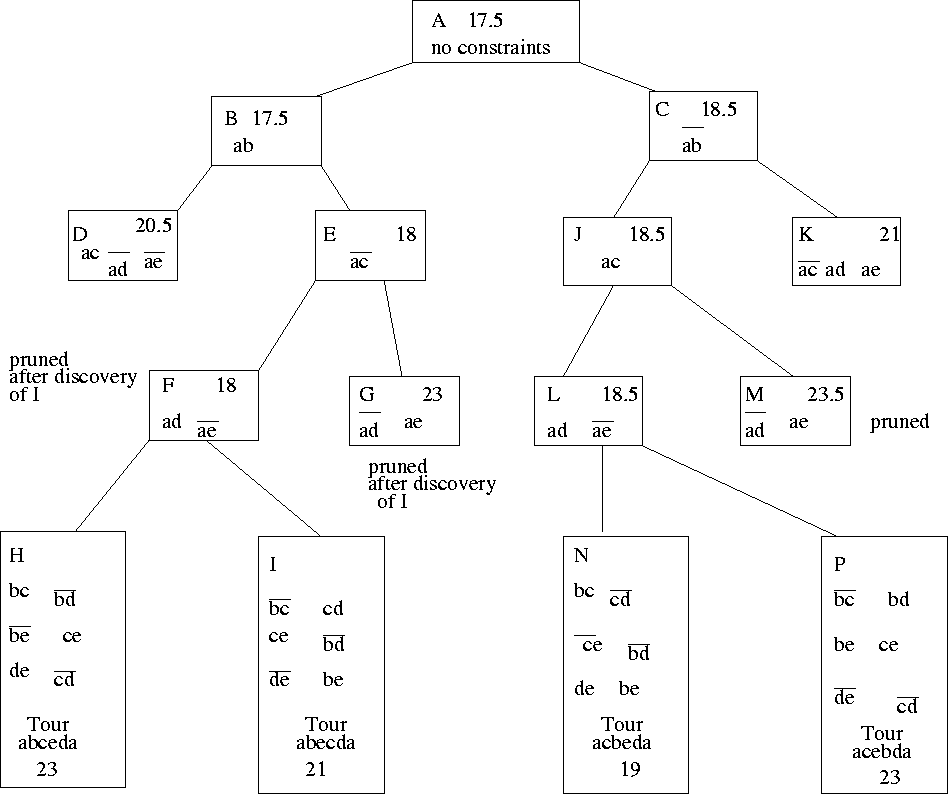| L(S) | = | a lower bound on the cost of | |
| Let C | = | cost of the best solution | |
| found so far |
Suppose it is required to minimize an objective function. Suppose that we have a method for getting a lower bound on the cost of any solution among those in the set of solutions represented by some subset. If the best solution found so far costs less than the lower bound for this subset, we need not explore this subset at all.
Let S be some subset of solutions. Let
| L(S) | = | a lower bound on the cost of | |
| Let C | = | cost of the best solution | |
| found so far |
| If C |
there is no need to explore S because it does |
| not contain any better solution. | |
| If C > L(S), | then we need to explore S because it may |
| contain a better solution. |
A Lower Bound for a TSP
Note that:
Cost of any tour
= ![]()
![]()

Now:
The sum of the two tour edges adjacent to a given vertex v
![]() sum of the two edges of least cost adjacent to v
sum of the two edges of least cost adjacent to v
Therefore:
Cost of any tour
![]()
![]()
![]()

Example: See Figure 8.17.
 |
| Node | Least cost edges | Total cost |
| a | (a, d), (a, b) | 5 |
| b | (a, b), (b, e) | 6 |
| c | (c, b), (c, a) | 8 |
| d | (d, a), (d, c) | 7 |
| e | (e, b), (e, f) | 9 |
 |
In the above solution tree, each node represents tours defined by
a set of edges that must be in the tour and a set of edges that may not
be in the tour.
e.g., if we are constrained to include edge (a, e), and exclude
(b, c), then we will have to select the two lowest cost edges as follows:
| a | (a, d), (a, e) | 9 |
| b | (a, b), (b, e) | 6 |
| c | (a, c), (c, d) | 9 |
| d | (a, d), (c, d) | 7 |
| e | (a, e), (b, e) | 10 |
Therefore lower bound with the above constraints = 20.5
Interestingly, there are situations where the lower bound for a
node n is lower than the best solution so far, yet both children
of n can be pruned because their lower bounds exceed the cost of
the best solution so far.
 |